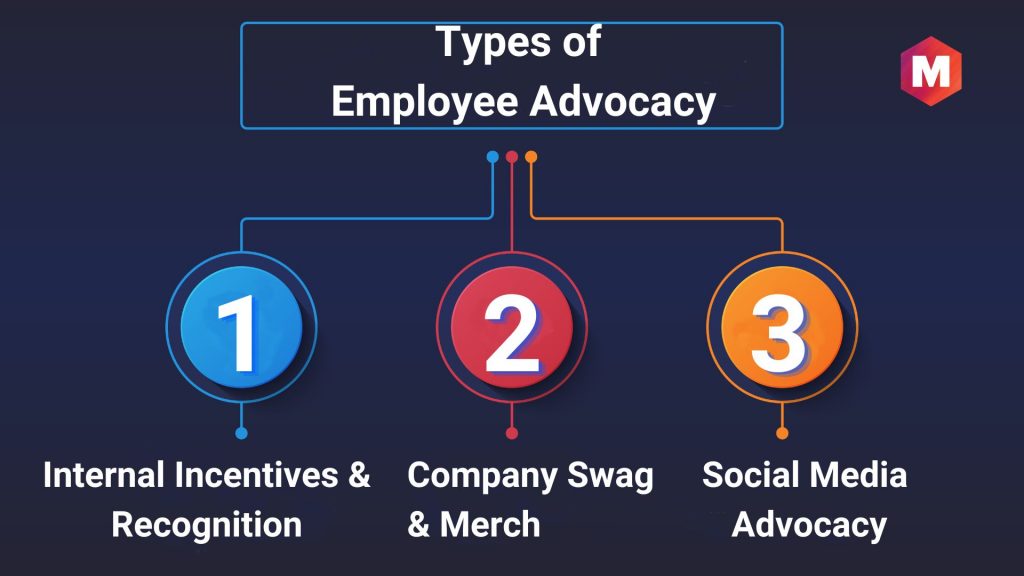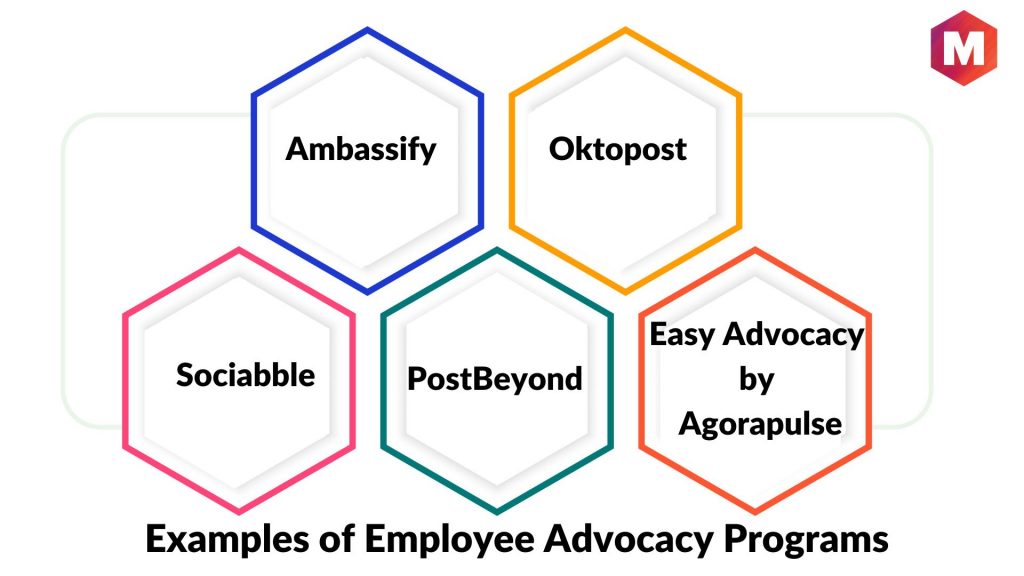Table of Contents
What is Employee Advocacy?
Employee Advocacy is when employees use their social media platforms to share positive content about their employer. This can be in the form of sharing blog posts, articles, or even just positive comments. Employee Advocacy can be a great way to improve employer branding and attract top talent.
Additionally, it can also help to improve employee engagement and retention. Employee Advocacy can help employees feel more connected to their company and its mission. It can also help create a sense of community among employees.
The goal of a successful employee advocacy program is to increase brand awareness and create a more positive company culture. Employee advocates are more engaged with their work and act as ambassadors for the company.
To create a formal employee advocacy program, businesses need to start with an employee advocacy strategy. This will help identify the goals of the company’s employee advocacy program and how to best encourage employees to participate.
Employee advocacy training is also important to ensure that employees understand the company’s objectives and that they feel comfortable sharing company content on their social media accounts.
What Is An Employee Advocacy Platform?
As the name suggests, an Employee Advocacy Platform is software that allows employees to share content on social media. The platform should allow employees to easily share content, while also giving them the ability to like, comment, and share other people’s content. The platform should also provide analytics so that you can see how your content is performing.
Why Employee Advocacy is Important?
Some of the key reasons behind the importance of Employee Advocacy are
1. Improve employer branding: Employee Advocacy can help improve your company’s employer branding. When employees share positive content about your company, it can help to attract top talent. Employee Advocacy can also help to improve employee engagement and retention.
2. Increased Sales: Employee Advocacy can help increase sales. It creates a sense of community among employees which can lead to more sales. Not only can optimization improve employer branding, but it also has the potential to bring in more customers.
3. Better Marketing Efforts: Employee Advocacy can help improve marketing efforts in the forms of lead generation and conversion. Employee Advocacy can also help improve social media reach and engagement.
4. Easier Time Attracting Great Candidates: Employee Advocacy can help make it easier to attract great candidates because it helps improve employer branding. When potential candidates see that your employees are engaged and happy, they are more likely to want to work for your company.
5. Improved Employee Engagement and Retention: Employee Advocacy can help improve employee engagement and retention. When employees feel more connected to their company and its mission, they are more likely to stay with the company.
Types of Employee Advocacy
1. Internal incentives & recognition
Employee Advocacy can help improve employee engagement and retention by providing internal incentives and recognition. This can be in the form of bonuses, gift cards, or even just verbal recognition.
2. Company swag & merch
Employee Advocacy can also improve by supplying company-branded merchandise. Not only does this aid with employer branding, but top talent is more likely to take notice and be attracted to your company.
3. Social media advocacy
Employee Advocacy is when employees share positive content about their employer on social media. This can be anything from blog posts and articles, to simply leaving positive comments. Doing so can help improve employer branding and attract top talent.
Employee Advocacy vs Social Advocacy vs Brand Advocacy
There is a lot of confusion when it comes to Employee Advocacy, Social Advocacy, and Brand Advocacy. The main difference between the three is who is advocating for the company.
Employee Advocacy occurs when employees use their social media to share content that paints their employer in a positive light.
Social Advocacy is when customers or clients use their social media platforms to share positive content about a company.
Brand Advocacy is when a company uses its social media platforms to share positive content about itself.
How to Build an Employee Advocacy Program?
1. Define your goals and objectives
The first step to building an Employee Advocacy program is to define your goals and objectives. What do you hope to achieve with your Employee Advocacy program?
2. Create content that employees will want to share
The next step is to create content that employees will want to share. This content should be high quality and informative. It should also be shareable on social media platforms.
3. Train your employees
Once you have created the content, you need to train your employees on how to share it. This training should include how to use social media platforms and how to properly represent your company online.
4. Incentivize your employees
To get employees to participate in your Employee Advocacy program, you need to provide incentives. These incentives can be in the form of bonuses, gift cards, or even just verbal recognition.
5. Make workplace culture a priority for your business
If you want your Employee Advocacy program to succeed, then promoting a positive workplace culture should be one of your business’ priorities. After all, employees are more likely to share content that reflects positively on their employer if they feel engaged and connected to their work.
6. Set KPIs & clear guidelines
Employee Advocacy programs need to have KPIs (Key Performance Indicators) and clear guidelines in place to be successful. These KPIs and guidelines will help you track the progress of your program and ensure that employees are adhering to the standards you set.
7. Set up an employee advocacy social media policy
Once you have all of the above in place, the next step is to create a social media policy for your employees. This policy should include guidelines on what employees can and cannot share online. It should also include consequences for not following the policy.
8. Use employee advocacy tools
There are several employee advocacy tools available that can help you manage and monitor your program. These tools can help you track employee activity, measure the impact of your program, and more. You may use Employee Advocacy Platforms, Employee Advocacy Software, and Employee Advocacy Tools.
9. Evaluate and adjust your program
The final step is to evaluate your Employee Advocacy program regularly. This evaluation should include tracking the KPIs you set in place. Adjustments should be made to your program based on the results of your evaluation.
Measuring your Employee Advocacy Plan
1. Employee Participation
Employee participation is one of the most important factors to consider when measuring the success of your Employee Advocacy program. To measure employee participation, you can track the number of employees who are actively sharing content, the number of new employees who are joining your Employee Advocacy program, and more.
2. Sales Figures and New Hires
Another way to measure the success of your Employee Advocacy program is to track sales figures and new hires. If you see an increase in sales or new hires after implementing your Employee Advocacy program, then it is likely that your program is having a positive impact.
3. Brand Awareness
Brand awareness is another metric you can use to measure the success of your Employee Advocacy program. You can track brand awareness by measuring the number of social media mentions, the number of new website visitors, and more.
4. Adoption rate
The adoption rate is the percentage of employees who are participating in your Employee Advocacy program. To calculate the adoption rate, you simply divide the number of employees who are participating by the total number of employees in your company.
5. Organic reach
Organic reach is the number of people who see your content without any paid promotion. To measure organic reach, you can track the number of social media shares, the number of blog views, and more.
6. Top Contributors
Another metric you can use to measure Employee Advocacy success is to track the top contributors. These are the employees who are sharing the most content and generating the most engagement. You can track the top contributors by measuring the number of social media shares, the number of blog views, and more.
7. Referrals
Employee referrals are another way to measure Employee Advocacy success. To track referrals, you can measure the number of employees who are referring new hires, the number of new website visitors who come from employee referral links, and more.
8. Organic engagement
Organic engagement is the number of people who interact with your content without any paid promotion. To measure organic engagement, you can track the number of social media likes, comments, and shares, the number of blog comments, and more.
9. Employee Net Promoter Score (eNPS)
It is a metric that measures employee satisfaction. To calculate eNPS, you simply ask your employees how likely they are to recommend your company to a friend or family member. You can then divide the number of employees who are highly likely to recommend your company by the total number of employees.
10. Overall Employee Satisfaction
Employee satisfaction is another important metric to consider when measuring Employee Advocacy success. To measure employee satisfaction, you can survey your employees and ask them about their experience with your Employee Advocacy program. You can also track employee turnover rates and absenteeism rates. If you see an increase in employee satisfaction after implementing your Employee Advocacy program, then it is likely that your program is having a positive impact.
Employee Advocacy Benefits for Company & Brand
1. Helps people learn more about your company: Employee Advocacy can help you raise awareness about your company and build trust with potential customers. When employees share content about your company, it helps to humanize your brand and make it more relatable.
2. Improves employee performance: Employee Advocacy can also help improve employee performance. When employees are proud of the company they work for and feel like they are making a difference, they are more likely to be engaged and productive.
3. By utilizing Proof, you can maintain control over your brand’s messaging: Employee Advocacy can also help you protect your brand’s reputation. With Proof, you can vet the content that employees share to make sure it is aligned with your company’s values.
4. Increases the number of qualified leads: Employee Advocacy can also help you generate more qualified leads. When employees share content about your company, it helps to reach new people who may be interested in what you have to offer.
5. Helps build a positive employer brand: Employee Advocacy can also help you build a positive employer brand. When employees share positive content about your company, it helps to attract top talent. Employee Advocacy can also help you retain employees by making them feel more engaged and appreciated.
Employee Advocacy Benefits for Employees
1. Quick and easy content to use: Employee Advocacy provides employees with quick and easy content to share. This is ideal for those who don’t have the time or ability to create their content.
2. Helps you become an expert in your field: Employee Advocacy can also help you become an expert in your field. By sharing content about your company, you can position yourself as a thought leader and build your brand.
3. Ways to meet other professionals and grow your network: Employee Advocacy can also help you meet other professionals and grow your network. When you share content, you have the opportunity to interact with other people who are interested in the same topics. This can help you expand your professional network and make new friends.
4. Increased visibility for your brand: Employee Advocacy can also help you increase the visibility of your brand. When you share content about your company, you have the opportunity to reach new people who may be interested in what you have to offer.
What is the Right Time to launch your Employee Advocacy Program?
The answer to this question depends on your company’s goals and objectives. If you want to improve employee performance, then Employee Advocacy can be launched at any time. If you want to generate more qualified leads, then Employee Advocacy should be launched when you have content that is ready to be shared.
Employee Advocacy can also be launched to coincide with a specific event or initiative. For example, Employee Advocacy can be used to support a product launch or to raise awareness for a cause.
Examples of Employee Advocacy Programs
1. Ambassify
Ambassify not only offers an employee advocacy solution, but it provides a complete brand advocacy solution that involves customers as well as employees.
Ambassify is an employee advocacy program that offers content feed, campaign creation with templates, messaging, rewards, advocate portals, and more. The Community Portal is one of its most useful features.
More than 20 campaign templates are available for use, each customizable to target a specific goal such as feedback, suggestions, A/B testing ideas, and polls.
2. Oktopost
Oktopost is an employee advocacy program that helps companies increase social media engagement and reach. It offers content management, sharing, and reporting features.
Oktopost’s content management system includes a library of pre-approved content, rules-based sharing, and scheduling. The sharing feature allows employees to share content on their social media accounts with just a few clicks.
3. Sociabble
Sociabble is a one-stop shop for content that sources material from social media, RSS feeds, and direct URL links. Not to mention, users can generate their content on the platform and share it with groups.
Plus, if you need to get a message out there stat, users can create posts labeled as “Call to Actions” so team members are immediately made aware of company events or other important announcements.
4. PostBeyond
PostBeyond is not simply a company that aids businesses with employee advocacy, but it also provides additional services such as brand resource management, employer branding, process management, and social selling.
PostBeyond’s advocacy platform includes content management, sharing, and reporting features. It also integrates with Salesforce, Marketo, and HubSpot.
5. Easy Advocacy by Agorapulse
Agorapulse Employee Advocacy is an all-in-one solution that helps companies increase social media engagement and reach. It offers content management, sharing, and reporting features.
Agorapulse Employee Advocacy’s content management system includes a library of pre-approved content, rules-based sharing, and scheduling. The sharing feature allows employees to share content on their social media accounts with just a few clicks.
The biggest selling point for Easy Advocacy is how incredibly easy it is to use. By investing just ten minutes of your time, you can launch a successful campaign. Additionally, sharing for your employees is easy and efficient; they will receive an email that includes links and suggested wording to share on each platform from one central location–all with a few clicks.
Conclusion
Employee advocacy can be a powerful tool to help organizations engage their employees and promote their brands. employees participating
When done correctly, employee advocacy can help an organization build trust with its employees participating and the public, while also improving communication and collaboration. Employee advocacy can also lead to increased sales and better customer relationships.
Organizations should consider implementing an employee advocacy program if they want to improve their brand image and create a more engaged workforce.
What do you think? Is employee advocacy something your organization should consider? Let us know in the comments below.
Liked this post? Check out the complete series on Human resources


